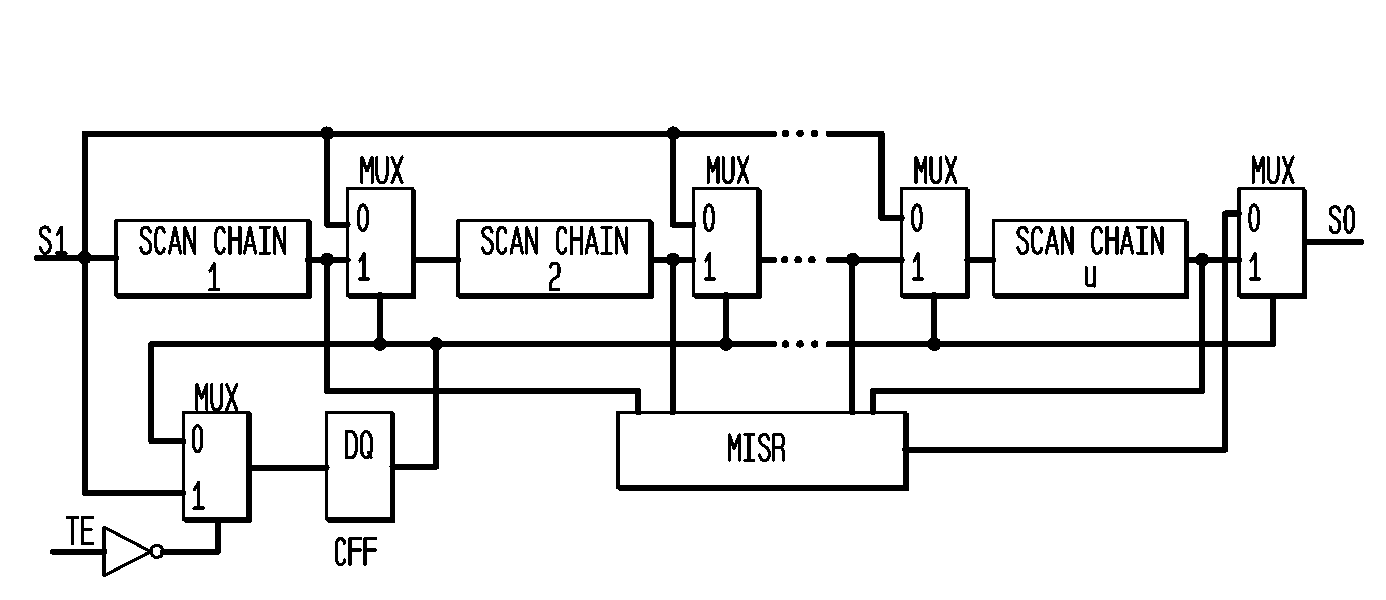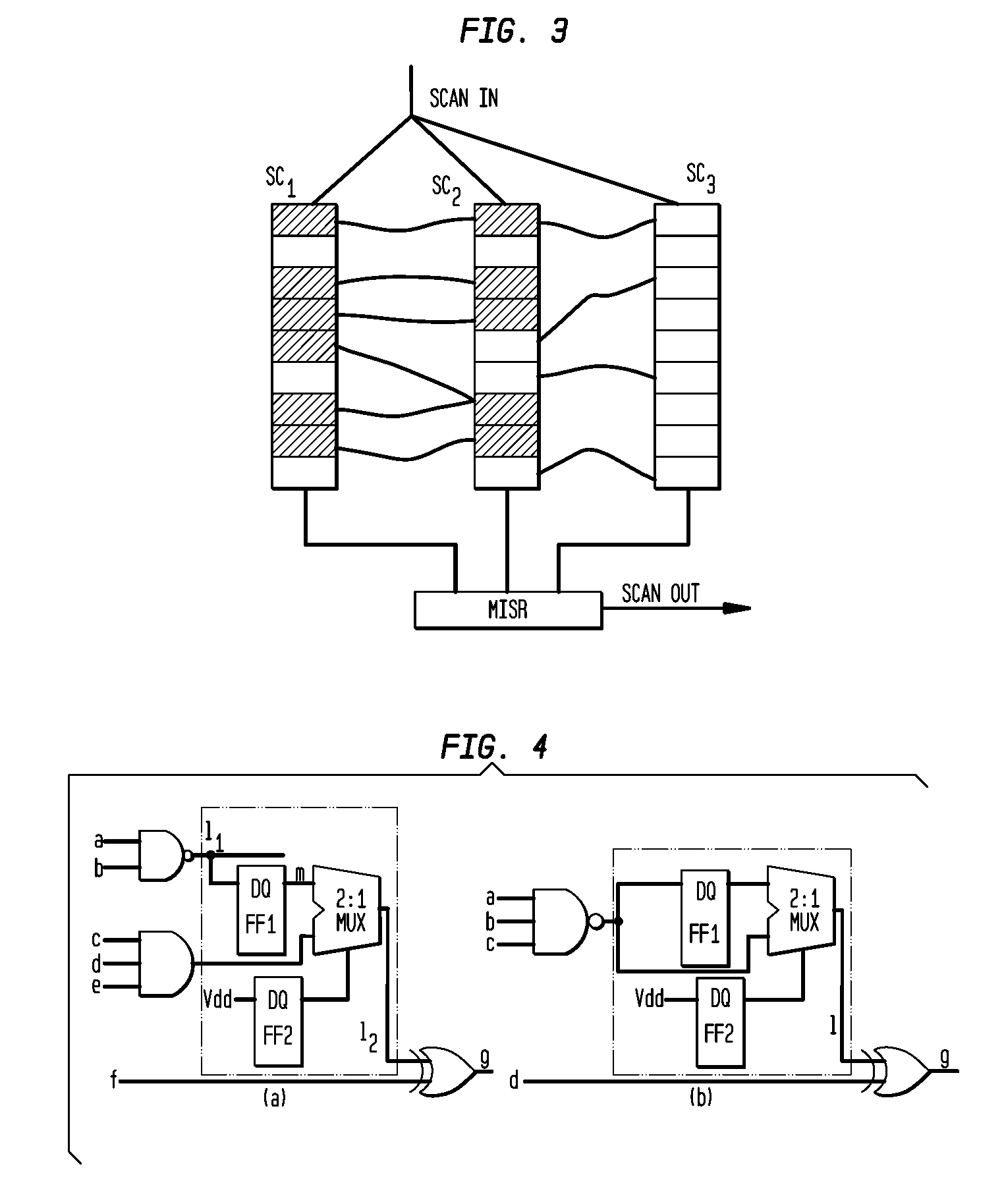Test Point Insertion and Scan Chain Reordering for Broadcast-Scan Based Compression
- Summary
- Abstract
- Description
- Claims
- Application Information
AI Technical Summary
Benefits of technology
Problems solved by technology
Method used
Image
Examples
Embodiment Construction
[0022]The invention includes a test-point-insertion TPI technique that can break broadcast scan architecture correlations among different signal lines in the circuit that severely affect the performance of both the test generation and the test compaction tools to make the design more amenable for test generation and test compaction. The invention includes a scan chain re-ordering technique that further reduces the correlations, which drastically reduces the test data volume and the test application tine. It uses the layout information and restricts the distance by which a particular scan flip-flop can be moved in the layout to minimize the scan chain routing overhead due to the proposed re-ordering operation. This also makes it more practical as any post-synthesis layout modification can be easily accommodated. The inventive TPI and scan chain re-ordering enables a design for-test scheme that can be integrated into any existing very large scale integrated VLSI design flow without im...
PUM
 Login to View More
Login to View More Abstract
Description
Claims
Application Information
 Login to View More
Login to View More - R&D
- Intellectual Property
- Life Sciences
- Materials
- Tech Scout
- Unparalleled Data Quality
- Higher Quality Content
- 60% Fewer Hallucinations
Browse by: Latest US Patents, China's latest patents, Technical Efficacy Thesaurus, Application Domain, Technology Topic, Popular Technical Reports.
© 2025 PatSnap. All rights reserved.Legal|Privacy policy|Modern Slavery Act Transparency Statement|Sitemap|About US| Contact US: help@patsnap.com



